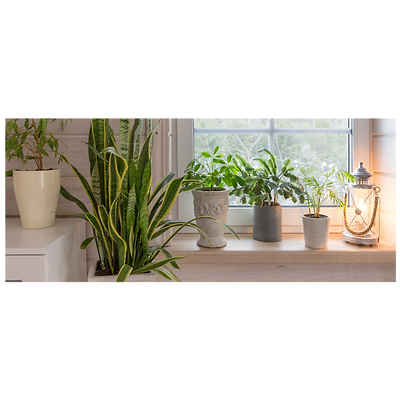5 Common Indoor Houseplant Mistakes
There are lots of different ways people make mistakes with their plants. from our experience, these 5 mistakes are the top reasons why people struggle to keep their plant alive.

1. Overwatering
Watering plants can become a challenging task to master if you're new to being a plant parent. The number one most common thing to kill your plants is overwatering. Overwatering your plants leads to Root Rot. We recommend to always do you research about your plant and the watering needs for it to survive.
2. Root Care
3. Not Fertilizing
The need for plant fertilizer is not a myth! In fact, it’s an extremely important variable for plant care—fertilizer provides plants the necessary nutrients they need to grow big and strong. Houseplants should be fertilized during periods of active growth, which is typically spring and summer.
Surrounded by soil and hidden away inside the pot, it’s easy for roots to become out of sight and out of mind. However, healthy roots are essential for a healthy plant as they are responsible for the uptake of water and nutrients. If your plant is struggling to stay healthy, it’s a good idea to check the roots for issues.
Overwatered, rotting roots will be brown or black and slimy. If this is the case, it is important to trim the plant’s roots to get rid of the rot and to adjust your watering routine. Underwatered roots can become desiccated and dry, losing their ability to absorb water. If you notice dry, brittle roots, increase your watering frequency, watering deeply so that all soil is moistened.
If your plant is thriving, avoid unnecessarily disturbing its delicate root system. The tiny root hairs (which do most of the work!) are easily damaged and take a long time to recover.
4. Not Knowing Your Plant
One of the best tips we can offer plant parents is to do a tiny bit of research every time they purchase a new plant for their home. Knowing the type of climate your houseplant originally came from is essential to take proper care of it. How often to water depends on each individual plant’s preferences.
Each plant needs a different frequency of watering, type of soil, and amount of light. Temperature is fairly simple for most plants—if it’s too cold for a human to be comfortable, it’s probably too cold for an indoor plant to grow. Just keep in mind that some plants love humidity and might thrive in a bathroom, while others prefer to be dry and sit beside a bright window to soak up the sunshine.
5. Keeping Plants Near Air Conditioning or Heat
You want to keep your plant’s environment as stable as possible. Most houseplants, just like us, are most comfortable between 65-80 degrees Fahrenheit. Extreme cold or hot fluctuations in temperatures can stress them out. Do your best to avoid placing plants near temperature hazards like vents, radiators, and exterior doors or open windows, which might create hot or cold drafts of air.
